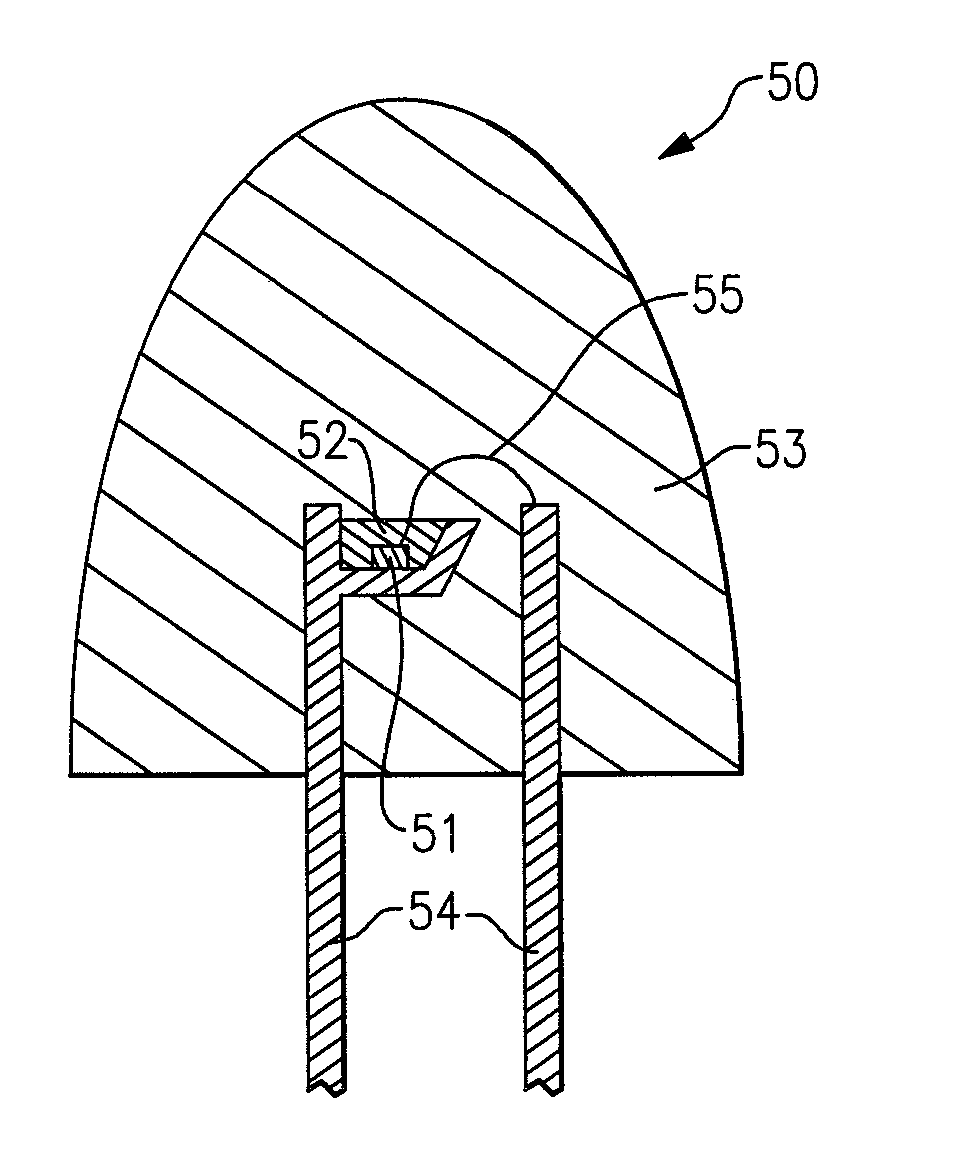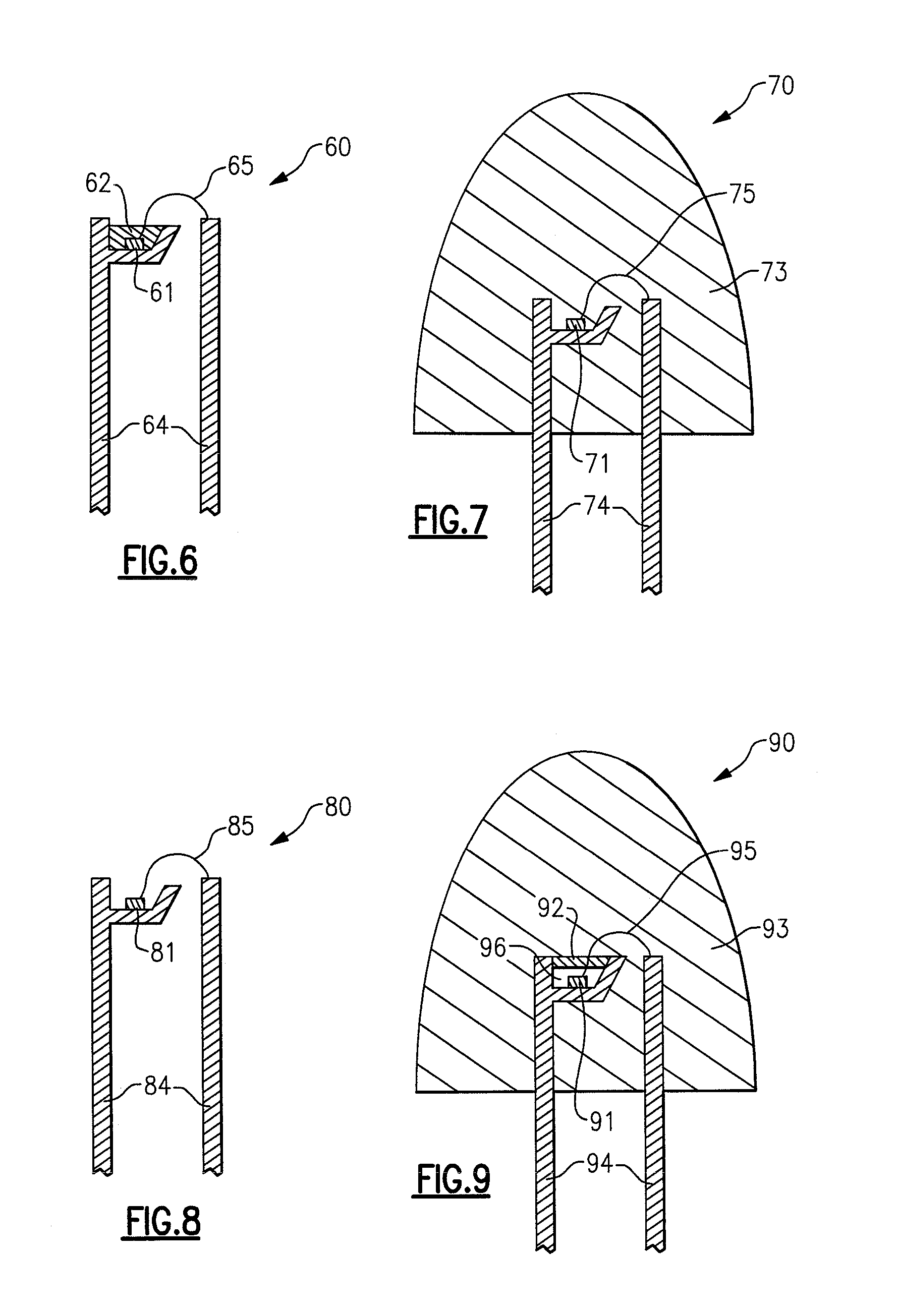Solid state light emitting device and method of making same
- Summary
- Abstract
- Description
- Claims
- Application Information
AI Technical Summary
Benefits of technology
Problems solved by technology
Method used
Image
Examples
first embodiment
[0132]FIG. 1 is a schematic cross-sectional illustration of a first embodiment according to the present invention. Referring to FIG. 1, there is shown a light emitter 10 including a first element 11, a light emitting active layer structure 12, a second element 13, a contact 14 and a metallized contact 15. The first element 11, the light emitting active layer structure 12, and the second element 13 are each generally rectilinear, i.e., a top view of any of them would show a generally rectangular perimeter.
[0133] In this embodiment, the first element is in direct contact with the light emitting active layer structure.
[0134] In this embodiment, the light emitting active layer structure has an active layer structure first side 16 and an active layer structure second side 17. The first element 11 is positioned on (and in direct contact with) the active layer structure first side 16, and the active layer second side 17 is positioned on (and in direct contact with) the second element 13. ...
second embodiment
[0135]FIG. 2 is a schematic cross-sectional illustration of a second embodiment according to the present invention. Referring to FIG. 2, there is shown a light emitter 20 including a first element 21, a light emitting active layer structure 22, a reflective element 28, a second element 23, an electrically conductive contact 24 and an electrically conductive contact 25.
[0136] In this embodiment, the first element is in direct contact with the light emitting active layer structure.
[0137] In this embodiment, the light emitting active layer structure has an active layer structure first side 26 and an active layer structure second side 27. To illustrate the terminology described above, the first element 21 is positioned on (and in direct contact with) the active layer structure first side 26 (and vice-versa), the active layer second side 27 is positioned on (but not in direct contact with) the second element 23 (and vice-versa), the reflective layer 28 is positioned on (and in direct co...
third embodiment
[0138]FIG. 3 is a schematic cross-sectional illustration of a third embodiment according to the present invention. Referring to FIG. 3, there is shown a light emitter 30 including a first element 31, a light emitting active layer structure 32, a second element 33, a first reflective layer 38, a second reflective layer 39, an electrically conductive contact 34 and an electrically conductive contact 35. The second reflective layer 39 goes around the entire circumference of the second element 33. The angle of the beveled second reflective layer 39, relative to a vertical (in the orientation shown in FIG. 3) line is preferably not larger than 45 degrees. In this embodiment, one method of providing the beveled mirrors is to perform partial cuts in the wafer to provide beveled grooves, then metallize the grooves, and then complete the cutting (i.e., to divide the wafer into a plurality of dice).
PUM
 Login to View More
Login to View More Abstract
Description
Claims
Application Information
 Login to View More
Login to View More - R&D
- Intellectual Property
- Life Sciences
- Materials
- Tech Scout
- Unparalleled Data Quality
- Higher Quality Content
- 60% Fewer Hallucinations
Browse by: Latest US Patents, China's latest patents, Technical Efficacy Thesaurus, Application Domain, Technology Topic, Popular Technical Reports.
© 2025 PatSnap. All rights reserved.Legal|Privacy policy|Modern Slavery Act Transparency Statement|Sitemap|About US| Contact US: help@patsnap.com



